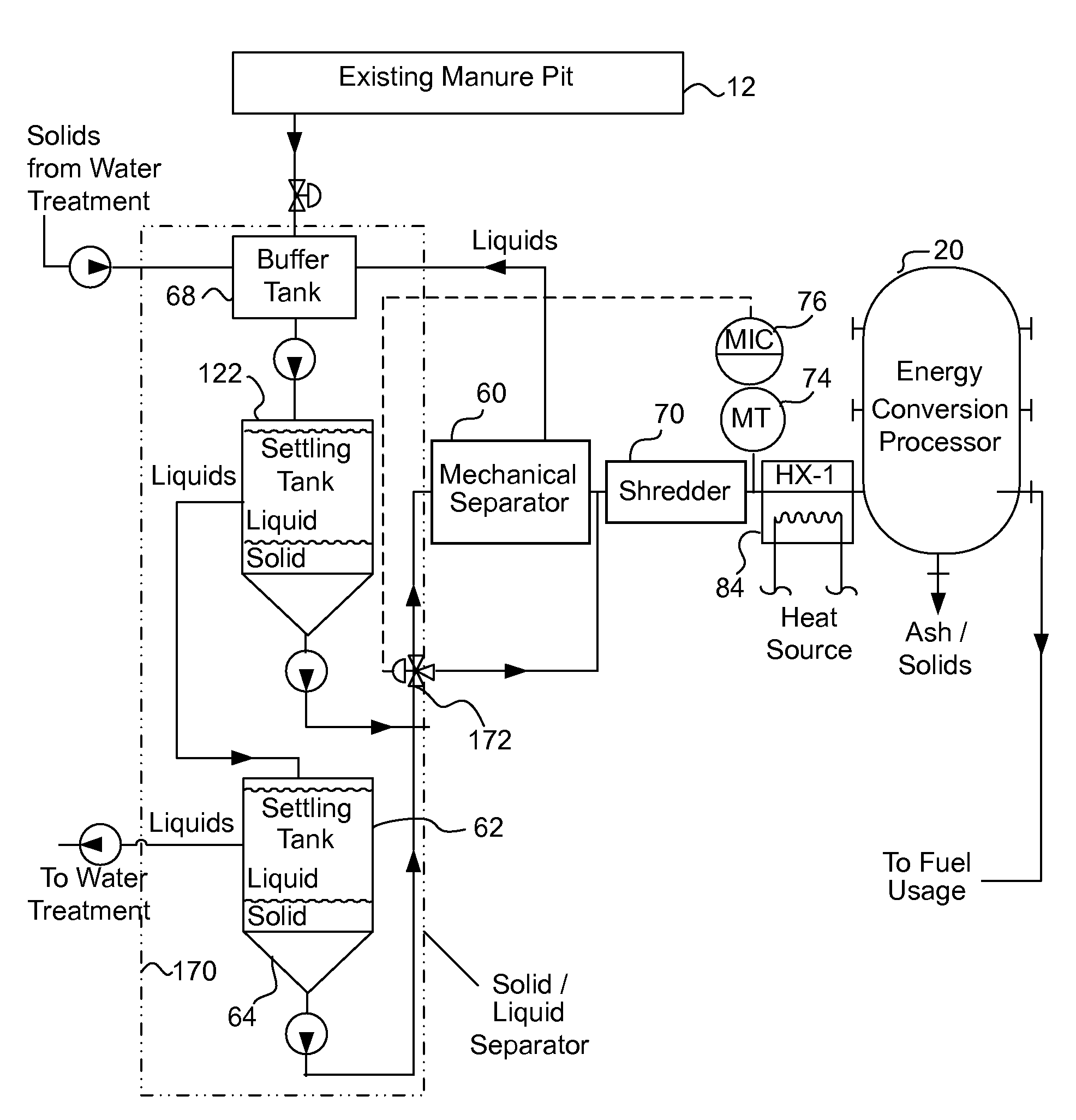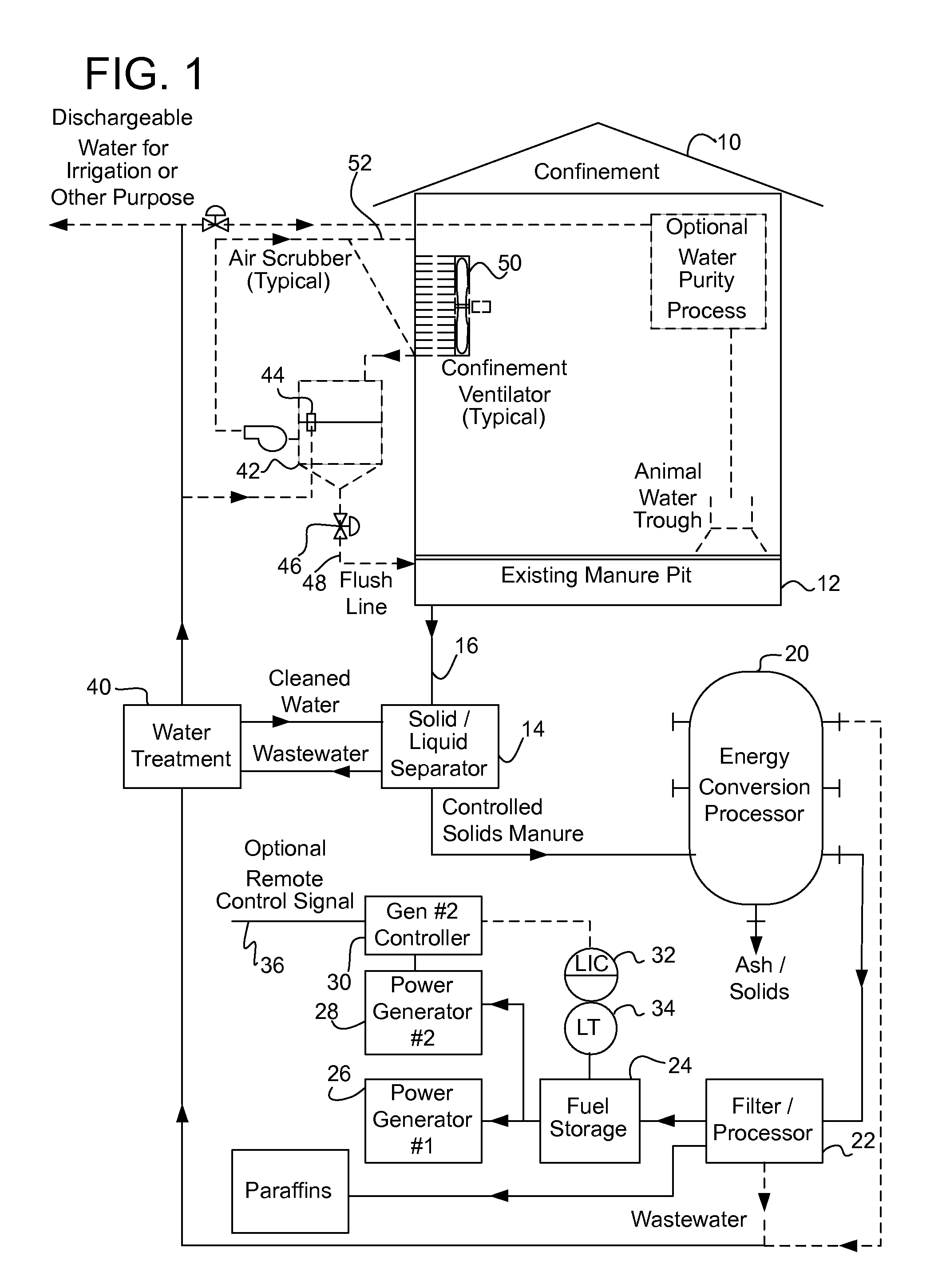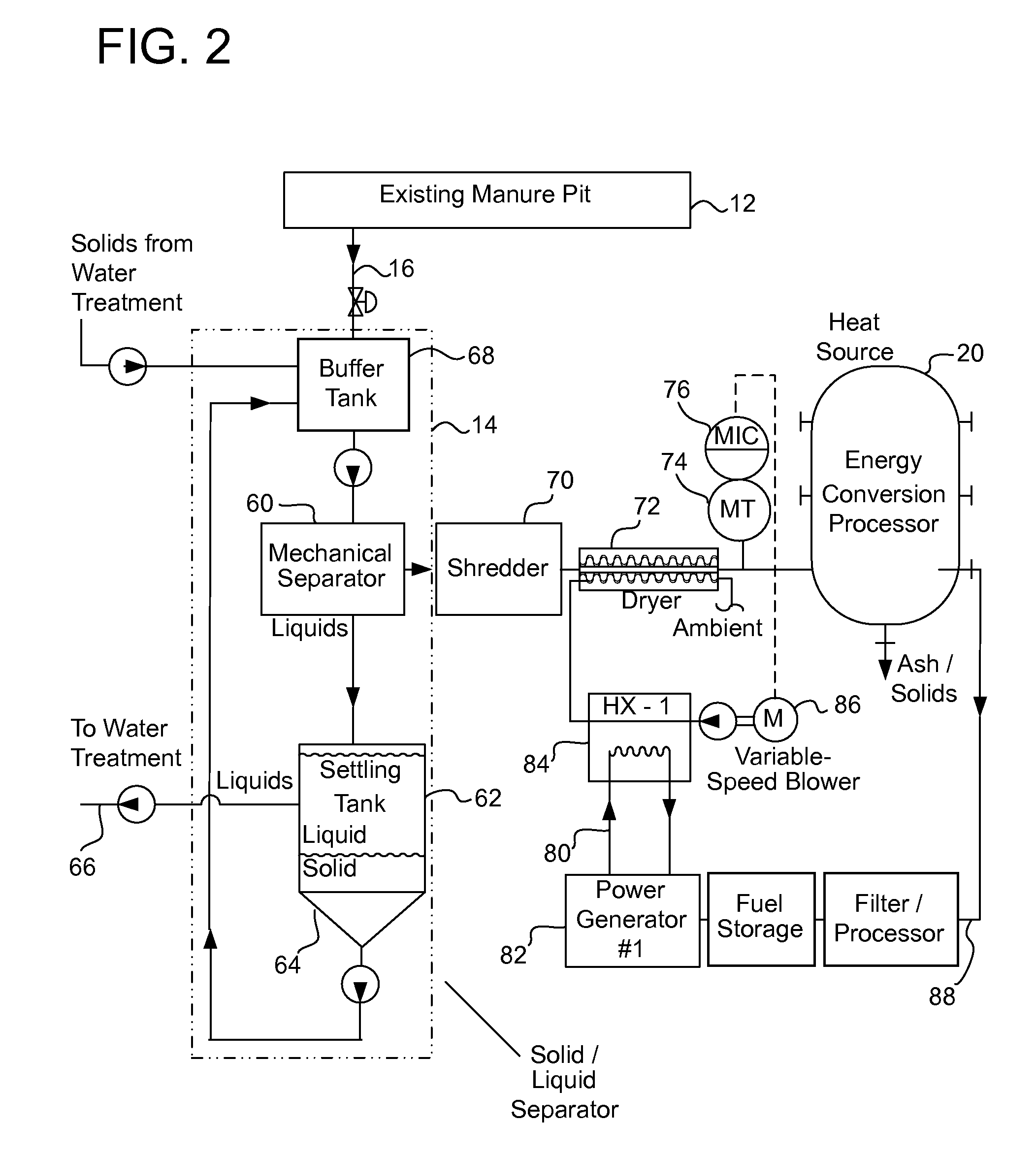Methods and systems for converting waste into complex hydrocarbons
a technology of complex hydrocarbons and waste, applied in the field of animal confinement waste, can solve the problems of large environmental contamination potential during field application of waste, high concentration of waste that has to be removed from buildings and disposed, and high concentration of waste that has to be disposed o
- Summary
- Abstract
- Description
- Claims
- Application Information
AI Technical Summary
Benefits of technology
Problems solved by technology
Method used
Image
Examples
Embodiment Construction
[0024]The systems herein described provide methods for handling raw animal waste and converting the waste into fuel, which may then be used for heat, transportation, or preferably direct conversion to power through a generator driven by an engine or combustion turbine.
[0025]Referring to FIG. 1, animal confinement 10 includes a manure collection area 12 for the collection of wastes and flushing water. The wastes and flushing water are transported to solid / liquid separator 14 utilizing a transporting mechanism 16. In one embodiment, transporting mechanism 16 operates by gravity, but other embodiments of transporting mechanism 16 exist which may also use pumps and / or conveyors in addition to or instead of gravity to transport animal waste and other accompanying materials. As used herein, the term “transport” is utilized to describe methods for moving mass from one location to another, including, but not limited to, pumping, gravity, auger, conveyor, and the like.
[0026]In a specific emb...
PUM
| Property | Measurement | Unit |
|---|---|---|
| diameter | aaaaa | aaaaa |
| diameter | aaaaa | aaaaa |
| voltage | aaaaa | aaaaa |
Abstract
Description
Claims
Application Information
 Login to View More
Login to View More - R&D
- Intellectual Property
- Life Sciences
- Materials
- Tech Scout
- Unparalleled Data Quality
- Higher Quality Content
- 60% Fewer Hallucinations
Browse by: Latest US Patents, China's latest patents, Technical Efficacy Thesaurus, Application Domain, Technology Topic, Popular Technical Reports.
© 2025 PatSnap. All rights reserved.Legal|Privacy policy|Modern Slavery Act Transparency Statement|Sitemap|About US| Contact US: help@patsnap.com



